To fully grasp the Philippines’ innate cultural diversity, one must first look to geography. The Philippine archipelago boasts 7,000+ islands divided into three major island groups, and further, into 17 regions, 81 provinces, 145 cities, and nearly 1,500 municipalities — all with unique markers of culture, heritage, and identity.

Image credit: mat227 via Canva Pro
Though this archipelagic quality often leads to notions of regionalism, the country’s inherent diversity is what exactly makes it a playground for travellers wanting more. Visiting the Philippines means giving in to adventures that would transport you to different worlds in mere days, from the verdant plains and rugged terrains of Luzon and the island paradises of Visayas, to the lesser frequented realms of Mindanao.
Cultural activities in the Philippines worth the trip
In the Philippines, as diverse as the land and seas are its people and the culture they bear. Welcome to the archipelago where experiences are always more — more fun, more immersive, more vibrant, more worth the wait and planning. Indeed, these cultural activities in the Philippines are worth travelling for, and the only way to prove that is to make the trip happen.
The next time you think of exploring Asia, pick a destination that allows you to see its wonders, all while stepping into the shoes of its culture bearers. It’s time you travel for something more: a culinary recipe passed down from generations, the making of a revered handwoven textile, or perhaps the painstaking process of yielding precious metals into indigenous jewellery. Here are but a few of the Philippines’ cultural activities that highlight unique heritage; and by doing so, welcome visitors to worlds beyond their own.
Traditional tattoo
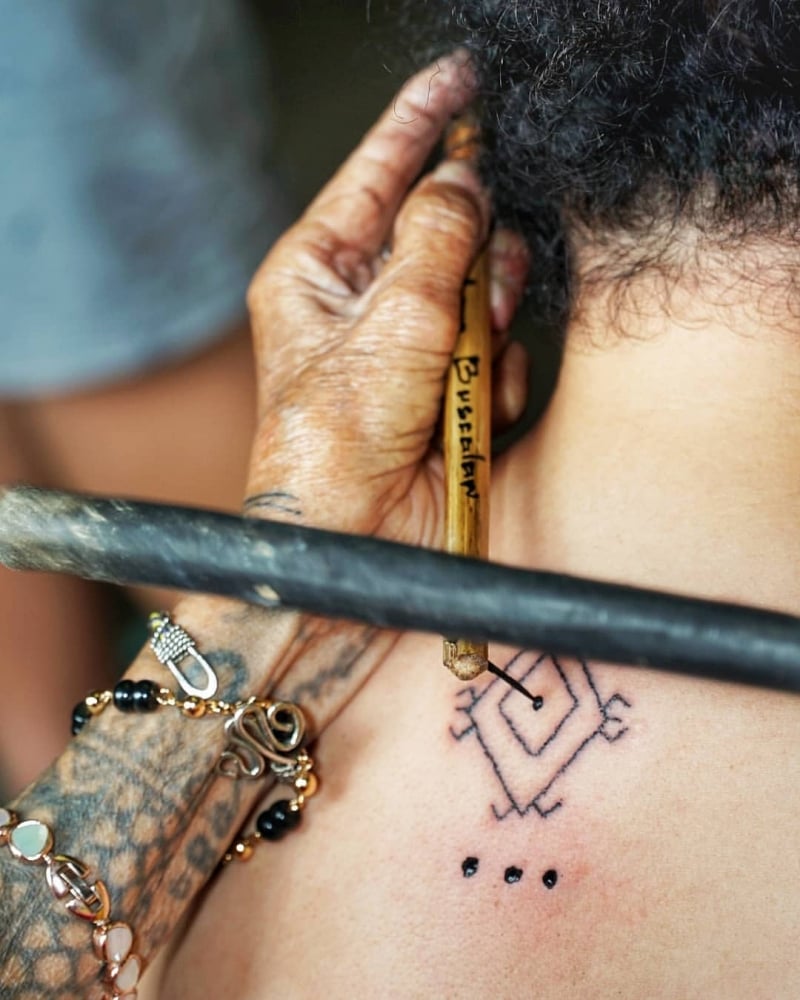
Apo Whang-od at work. | Image credit: YaNong B
At the mention of traditional, tribal, or native tattoos in the Philippines, one name comes to mind so easily especially for locals: Apo Whang-od Oggay, National Living Treasure and acclaimed mambabatok of the Butbut people in Buscalan, Kalinga.
Batok, in the Philippines’ northern mountainous regions, is the art of hand-tapping significant tribal symbols onto human skin. Rhythmic jabbing motions of thorns picked from available native citrus plants (usually calamansi or pomelo) form lines and shapes that symbolise the tribe’s ideals such as beauty, wisdom, courage, or even fertility. These au naturel needles are held in place with bamboo sticks cut and carved to fit the tattoo artist or mambabatok’s hands perfectly. The mambabatok hand-taps the symbols onto flesh until they seep into the person’s being by way of permanent ink made from charcoal and water. This way, the individual and the symbol he or she bears become one.
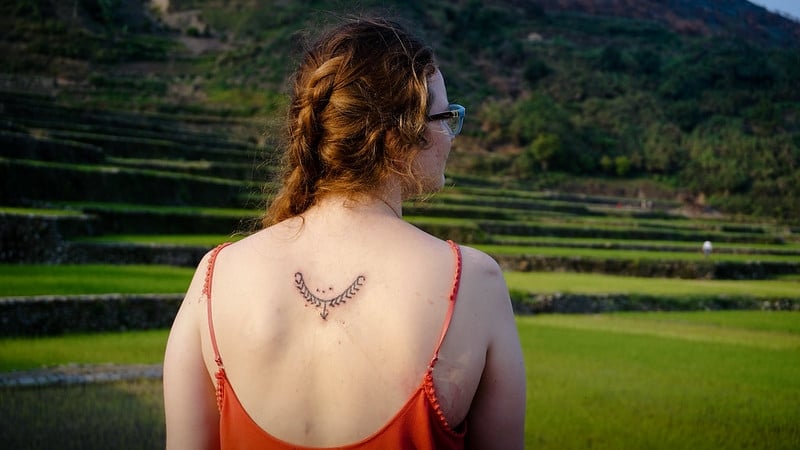
Buscalan in Kalinga Province, home of the mambabatok. | Image credit: Mackenzie Molina
Historically, these symbols were handpicked and hand-tapped by the tribe’s mambabatok to beautify and empower women, and to mark men’s bravery in battle. These days, visitors make their way up to the mountains of Kalinga to experience batok themselves — in the able hands of Apo Whang-od, her descendants, or her mentees. Add to that the chilly temperatures of northern Philippines and mugs of homegrown arabica coffee that thrive only in this region’s altitudes.
Also read: Cure Post-Lockdown Blues by Touring Idyllic Farms in the Philippines
If you’re lucky enough, the living legend might just bless you with a symbol she deems you worthy of; so bookmark this once-in-a-lifetime cultural activity in the Philippines and put your best foot forward when you meet the locals of Buscalan.
Hilot, the art of healing

Image credit: Alan Caishan
Filipinos are known for their warmth and hospitality, so it isn’t surprising that healing hands behind a local massage called hilot occupy their own space in traditional healing.
Also read: 12 Common Culture Shocks Foreigners Have About the Philippines
In many provinces, practitioners of hilot are respected members of the community. The manghihilot, usually believed to be gifted with the intuition that allows them to heal the sick or fortify wellness, takes it upon themselves to master this traditional art of healing. In the Philippines, this covers a wide range of alternative medicine: acupressure, deep-tissue massage, and even the use of herbs and natural oils to aid the healing process. It is said that one hilot session rids the body of lamig, muscle knots or myofascial pain points caused by strain or inflammation.
There’s only one way to find out; sign up for your first hilot session to soothe muscles sore from endless touring. You can either make your way to Siquijor, the country’s very own island of mysticism and faith healing. Aside from its under-the-radar natural beauty (think coconut trees and the clearest turquoise waters), Siquijor is known for its annual healing festival. Alternatively, you can head to a spa centre or billet yourself in a hotel with an in-house spa that offers hilot. It’s as if you can feel those muscle knots melting away already.
Habi textile weaving
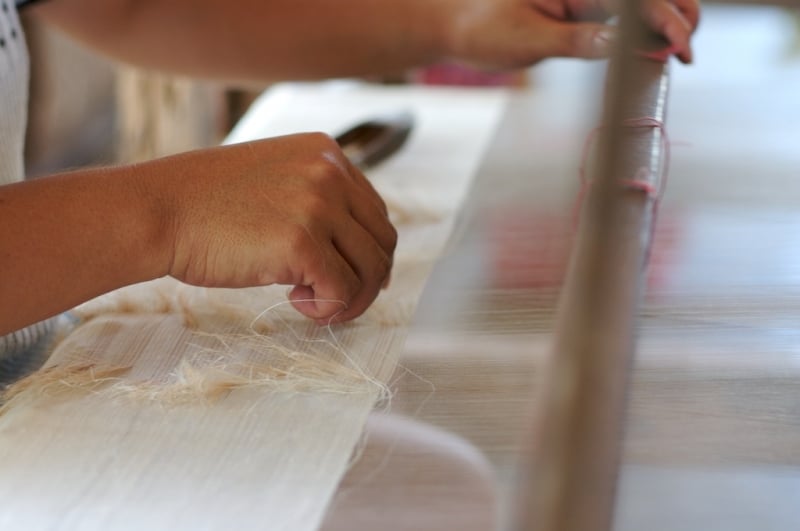
Piña weaving in Palawan, Philippines. | Image credit: Jeff Werner
Like its Southeast Asian neighbours, the Philippines takes pride in a rich textile-making tradition as fine and vibrant as the threads that go into making each handwoven piece. Philippine textile is mostly defined by an area’s available raw materials, visual elements that locals hold dear, and steps in the creation process distinct to the craftspeople.
For example, piña textile — a stiff but almost lace-like material — is made from pineapple fibres, which are quite abundant across the country. Its name is derived from the Spanish word for pineapple, and this gives insight into its origins. The high-lustre fabric indeed rose to fame during the Spanish occupation in the Philippines, when traditional garments such as barong and pañuelo were fashioned from pineapple, or sometimes, abaca fibres mixed with polyester or silk. Embellishments would come in the form of intricate embroidery that often mirrored native flora and dainty patterns. Today, visitors flock to the island paradises of Palawan or Aklan to witness artisans make piña right before their very eyes.
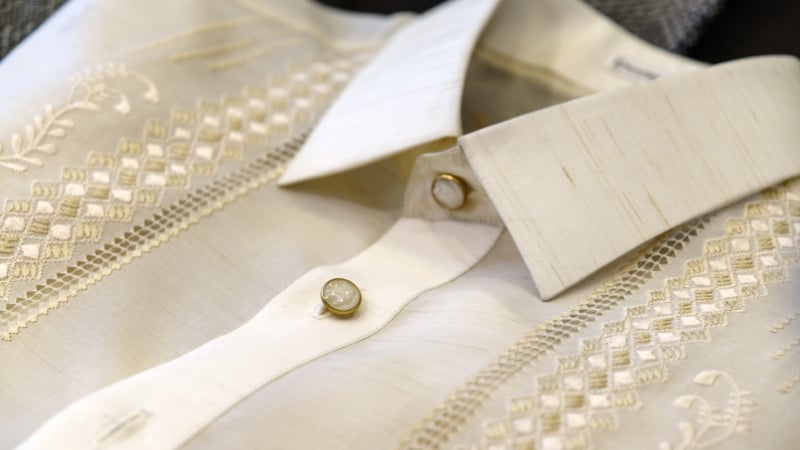
The finished product, a barong or piña formal shirt traditionally worn by men. | Image credit: bugking88 via Canva Pro
Some Philippine textiles, on the other hand, take on a most mystical quality. The T’nalak textile of Lake Sebu in South Cotabato, Mindanao is considered sacred by the T’boli people. What’s more, the women who make them by hand have earned the moniker “dreamweavers” because the patterns they will to reality through their craft originate from their dreams. These aren’t ordinary dreams, either; they are believed to be messages and symbols carved into their memories by a spirit called Fu Dalu, who guards and connects all dreamweavers. Plan an excursion to Lake Sebu, the “Land of the Dreamweavers,” to attend the T’nalak Festival or simply to witness how T’nalak is made — from dyeing to weaving.
There are other textiles across the archipelago, of course, which are just as significant and beautiful. There’s the Ilocos Inabel (Luzon), the Panay Hablon and Patadyong (Visayas), and Pis Syabit of Sulu (Mindanao), to name a few. These textiles are cultural treasures that make for precious keepsakes to remember your trip by. More importantly, by taking part in this cultural activity in the Philippines, you support artisans and the weaving practices they safeguard.
Pottery
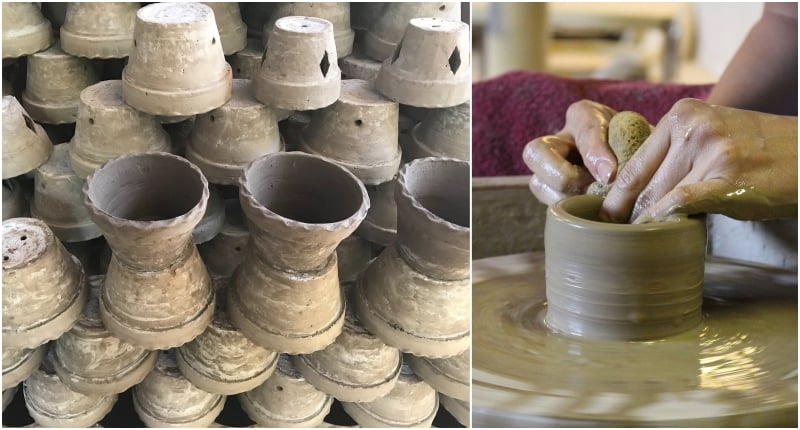
Image credit (L-R): Delan Robillos; mnplatypus
For a safe and creative way to get your hands dirty on your trip to the Philippines, dip your fingers into the practice of Damili pottery. Considered a cultural treasure of San Nicolas, Ilocos Norte, Damili is the Ilocano way of making ceramics out of the area’s famous red clay. San Nicolas’ history and local earthenware industries are very much ingrained in Damili, so much so that it is deemed the province’s ‘terracotta town’ and even has a Damili museum to complement the title.
Among the Philippines’ cultural activities that may beckon to you, Damili is a practice you can definitely take to heart since you can master the craft yourself. This hands-on approach to heritage-sharing is sure to leave a mark on adventurous travellers looking to pick up a skill on their way around the world. Damili practitioners offer visitors the chance to learn the basics of making Ilocano earthenware, so why not take the potter’s wheel for a spin? After classes, heed the call of Ilocos’ empanadas and Vigan longganisas, sand dunes, and calm beaches.
Culinary tours
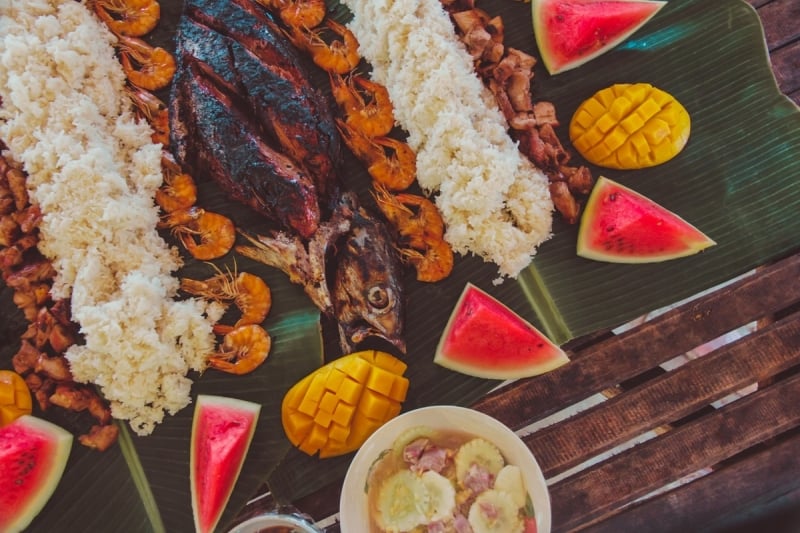
Don’t forget to treat yourself to a Filipino boodle fight, where you can dig in with clean hands. | Image credit: John Matthew Flores
It’s no secret that Filipinos are big eaters. With big appetites, come great responsibility that mostly rests on the country’s culinary staples and the geniuses that work their magic in Filipino kitchens. Therefore, getting to know the Philippines can be quite a delectable affair — just let its diverse cuisine steer you in the right direction.
There are many destinations across the archipelago that would vie for the title, “food capital of the Philippines.” In Luzon, a mere hour’s drive from the city of Manila, is Pampanga, home of sisig — a sizzling pork dish that the late Anthony Bourdain fell in love with at first bite. In a media interview, Bourdain went as far as saying, “…sisig is perfectly positioned to win the hearts and minds of the world as a whole,” touting it as the culinary highlight of his trip to the Philippines.
Farther away from the Philippine capital is Cebu, famous for lechon, fresh seafood, and steamed rice wraps called puso. Embarking on a DIY food crawl in these parts of the Philippines takes very little effort, as restaurants are plentiful and accessibility is never an issue in metropolitan Cebu. Moreover, Cebuanos love to keep their visitors well-fed so ready your bellies!
Pampanga and Cebu comprise only the tip of the Philippines’ gastronomic iceberg; there is definitely more to tickle your palate with if you dedicate a getaway to satiating your appetite with filling Filipino spreads, savoury or sweet. Specially curated culinary tours in the provinces of Laguna and Davao take you on a food-making journey, where you get to taste local dishes and marvel at how they’re made. Perhaps this is the best time to venture past your usual Hainanese chicken rice and chilli crab, or even learn a new Filipino recipe!
Festivals
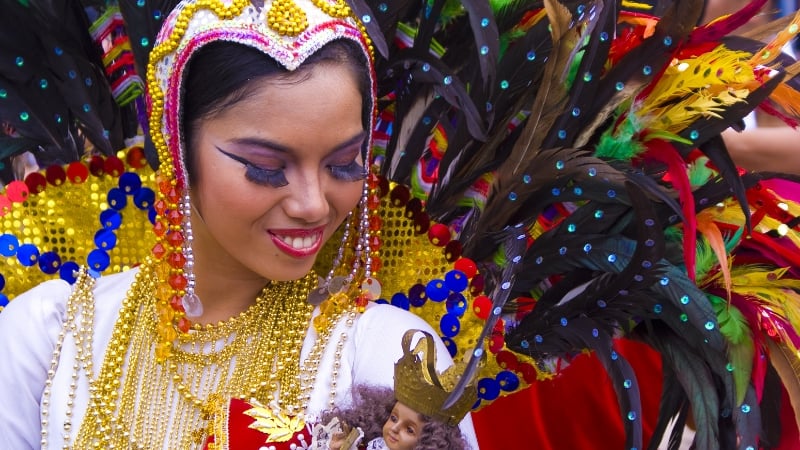
Among the cultural activities in the Philippines, festivals are considered the most vibrant. The Sinulog Festival in Cebu pays homage to the Santo Niño or the image of the Child Jesus. | Image credit: Wirestock via Canva Pro
As they say, it’s more fun in the Philippines; there is no stronger testament to this than the Philippine festivals that pay tribute to different themes, events, products, and beliefs important to the communities that celebrate them. Pre-pandemic, the country would annually celebrate over 40,000 festivals big and small. Of course, this has drastically changed in the new normal — but more fun awaits once recovery is in full swing.
Brass casting and beading
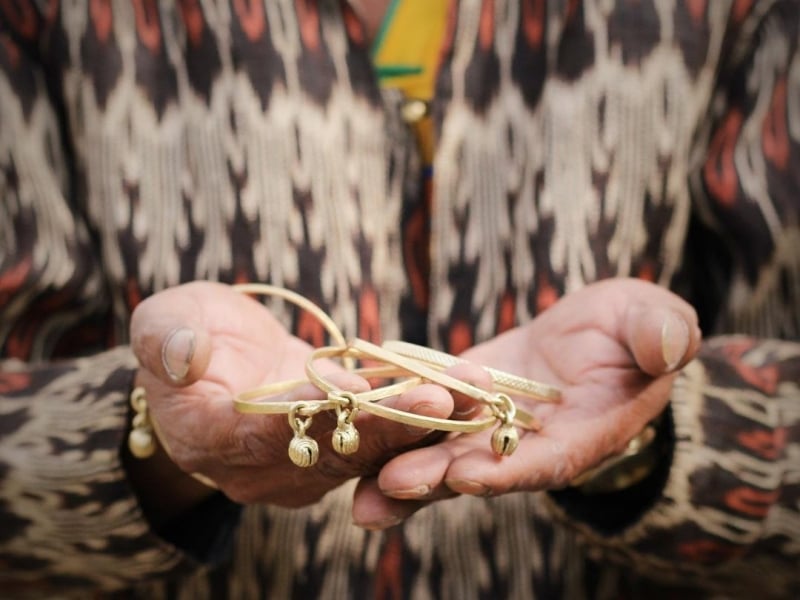
T’boli brass jewellery held by an artisan garbed in T’nalak or T’boli dream weave. | Image credit: Gabs Sagaral | Sesotunawa
We circle back to South Cotabato, where the ancient traditions of Temwel (T’boli brass casting) and Timool Limimet (T’boli beadwork) stand strong and proud to this day. A quick visit to the communal workshops of the artisans and jewellery makers of Lake Sebu will present travellers with insights into the ways handmade ornaments and accessories have empowered indigenous communities through the decades.
Despite challenges, T’boli brass casting and beading remain avenues for preserving and promoting South Cotabato’s indigenous heritage and fortifying culture-based livelihood. The beauty in responsibly accessorising with another culture’s markers of identity lies in its ability to bridge gaps through cultural tolerance and enlightenment. For years now, T’boli brassworks and beaded jewellery have successfully, steadily stirred interest even among foreigners and the youth — interest that is integral for the art forms’ longevity.
T’boli-owned social enterprises like Sesotunawa give travellers a sneak peek into the life and work of their local artisans. Let these stories of people, patterns, processes, and designs fuel your desire to venture deeper the next time you visit crafts-driven communities. Just as adventurers expect destinations to offer more, initiatives that genuinely and sustainably support cultural activities also give individuals the chance to become more than just a tourist or customer. As Sesotunawa puts it, the goal is to be well on your way to becoming a “culture mover.” The Philippines is a great place to begin your journey.
Cultural activities in the Philippines: a mainstay in your itinerary
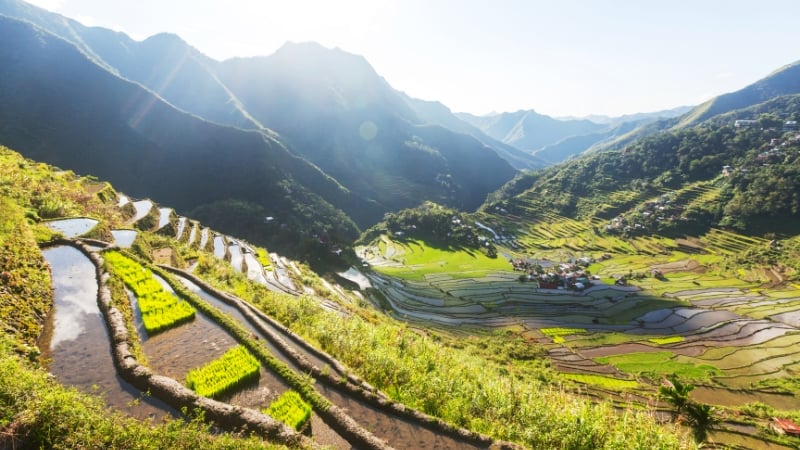
Banaue Rice Terraces in the country’s northern mountains — an icon of cultural heritage preservation and a wellspring of cultural activities in the Philippines. | Image credit: Kamchatka via Canva Pro
With 7,000+ islands divided into three major island groups, and further, into 17 regions, 81 provinces, 145 cities, and nearly 1,500 municipalities, one can only imagine how truly spoilt for choice travellers are when they head to the Philippines.
When you start planning your next trip, though, leave space for immersion. Wouldn’t it be a treat to dedicate portions of exploration to the widening of your heritage lens? There are many activities to kickstart your cultural trail even in the city: museum-hopping, an art gallery crawl, tracking down monuments and heritage structures, and taking time to read heritage markers. Every stop you make for culture’s sake is a huge win for culture bearers.
While we set off on adventures for ourselves, let’s also travel for cultural activities and the communities that consider them pillars of identity. More fun awaits in the Philippines’ cultural corners — see you there.




